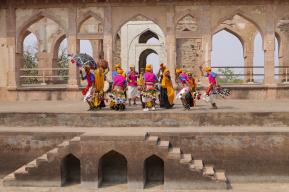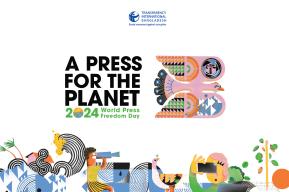News
Students in Sudan join UNESCO eDNA sampling in Red Sea

On 9 and 10 April 2023, 8 students from primary and secondary schools in the villages surrounding Sudan’s Dungonab Bay and Mukkawar Island Marine National Park teamed up with scientists and fishermen to travel the World Heritage site and become citizen scientists for the day. Surrounded by sea turtles and dolphins, the students collected water from the Red Sea at 5 different locations across the World Heritage area and filtered genetic material of species with the help of specialized equipment provided by UNESCO. Preservation liquid was subsequently added to the samples to fix the eDNA and make them ready to ship to a specialized lab for analysis.
The eDNA expedition took a total of 12 hours and was supervised by Sudanese eDNA expert Dr. Mona Almahy, associate research professor at the Red Sea Fisheries Research Station.
The UNESCO citizen science eDNA expedition allows Sudan to accelerate understanding of marine biodiversity of our remote World Heritage marine areas while inspiring the next generation of scientists.
Environmental DNA is an innovative scientific method that can be used to monitor and evaluate ocean biodiversity without the need to extract organisms from their environment. Just one liter of water may contain genetic material from hundreds of species and may help determine the area’s biodiversity richness.
The UNESCO environmental DNA Expedition initiative is being rolled out across 25 marine World Heritage sites between September 2022 and April 2023. The eDNA data is expected to provide a one-off snapshot of biodiversity richness across marine World Heritage sites, particularly for fish species.
By combining the resulting biodiversity data with Intergovernmental Panel on Climate Change (IPCC) heat scenario projections, the initiative aims to provide a first glimpse of potential geographic and distribution shifts of fish species as a result of climate change which then in turn can inform conservation decision-making.
The eDNA Expeditions’ resulting data will be made publicly available through the UNESCO Ocean Biodiversity Information System, the world’s largest open science marine species database. Final results are expected to be available in Spring 2024.
The UNESCO eDNA initiative is a joint collaboration between the Intergovernmental Oceanographic Commission and the World Heritage Centre. It is made possible with the support of the Government of Flanders (Kingdom of Belgium) and implemented in the context of the United Nations Decade of Ocean Science for Sustainable Development (2021-2030).
About Sanganeb Marine National Park and Dungonab Bay – Mukkawar Island Marine National Park World Heritage area (Sudan)
Located in the Red Sea, the World Heritage site hosts an impressive range of fringing and off- shore reef formations which include some of the world’s most northerly coral reefs. The property’s Sanganeb atoll hosts over 300 fish species with numerous being endemic and rare. The site is also a refuge for dugongs, sharks, manta rays, and dolphins and is a resting and breeding area for marine turtles. The site was inscribed on the UNESCO World Heritage List in 2016.






